Allowable Load Ratings and Tables Guide
Guide to Reading Truss Load Ratings & Allowable Load Tables.
Xtreme Structures is committed to safety and our load tables are all produced by third party Engineering Firms with years of experience in the entertainment industry. The allowable load ratings shown in the tables are all verified with testing that allows XSF customers the confidence of safety.
This Load Table Guide page and YouTube video below will help you determine the appropriate truss to use for your application, or conditions based on allowable load ratings.
Learning how to correctly read allowable load tables is a vital skill when working with overhead truss and rigging no matter what the truss application may be. If you require any assistance or if your load case scenario falls outside of the maximum allowable loads in our tables, we strongly recommend you always consult an industry professional or engineer before loading components on to any truss.
FOLLOW & LIKE XSF
First, let’s define 2 terms you’ll need to understand:
Dead Load is defined as the weight of the structural component and all material permanently attached to and supported by the structure.
Live Load is considered the additional load or weight superimposed on or temporarily attached to a structure.
Load tables are broken down into 5 Main Sections
5 Main Sections of The Load Table
Uniformly Distributed Load (UDL)
is a load that is distributed evenly along the entire span of truss. Examples of a UDL would be a curtain or video wall.
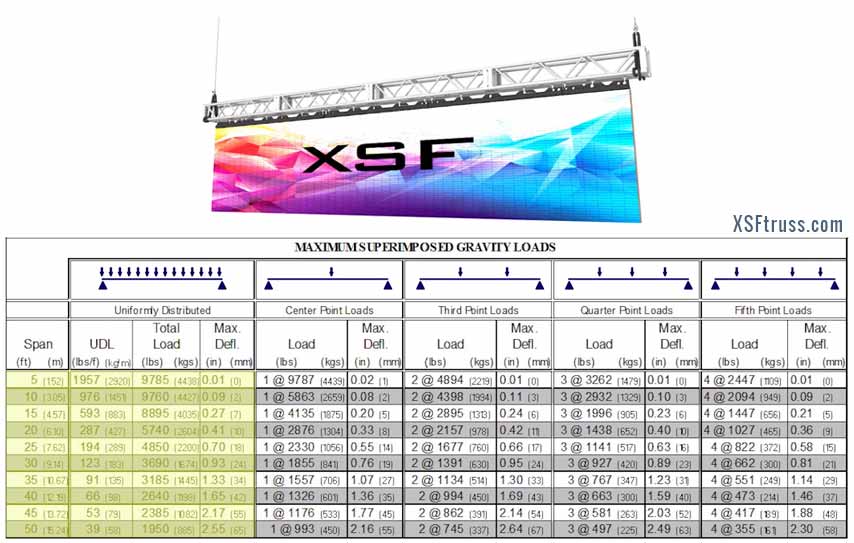
The Center Point Load
reported in the table is the maximum allowable point load applied at the center of a span
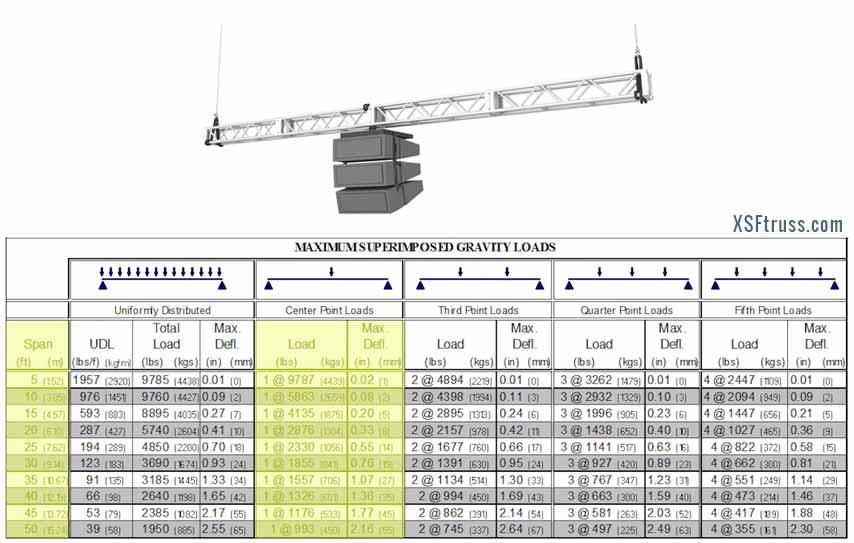
The left-hand vertical columns represent increasing increments of span.
The Third Point Loads
reported are the two maximum allowable point loads evenly spaced at each third point along a span.
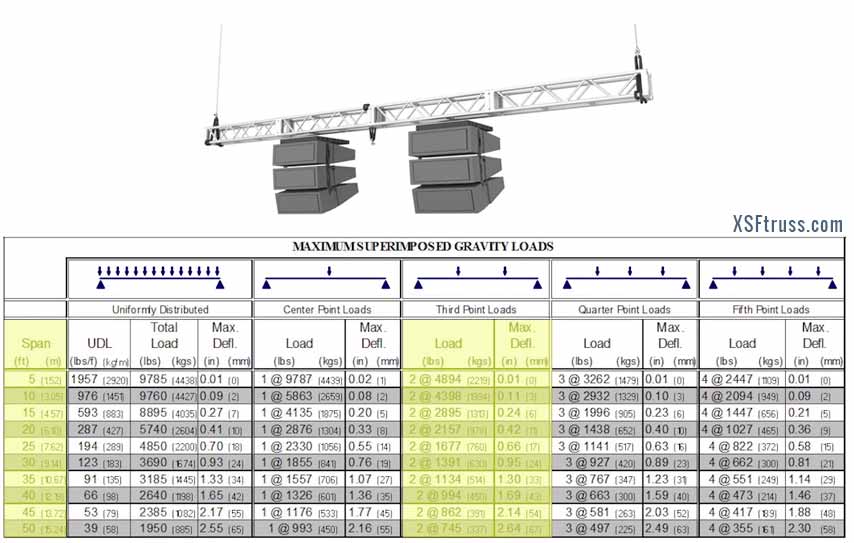
The left-hand vertical columns represent increasing increments of span.
The Quarter Point Loads
reported are the three maximum allowable point loads even spaced at each quarter point along a span.
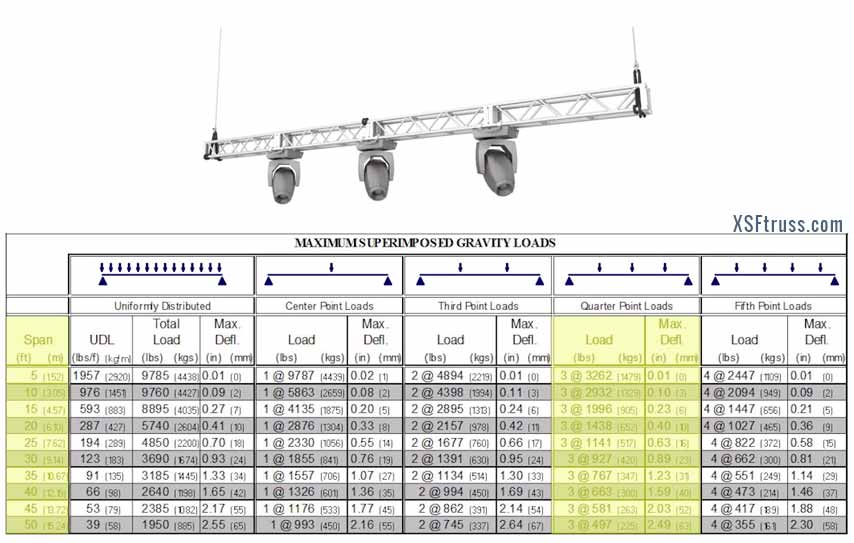
The left-hand vertical columns represent increasing increments of span.
The Fifth Point Loads
reported are the four maximum allowable point loads evenly spaced at each fifth point along a span.
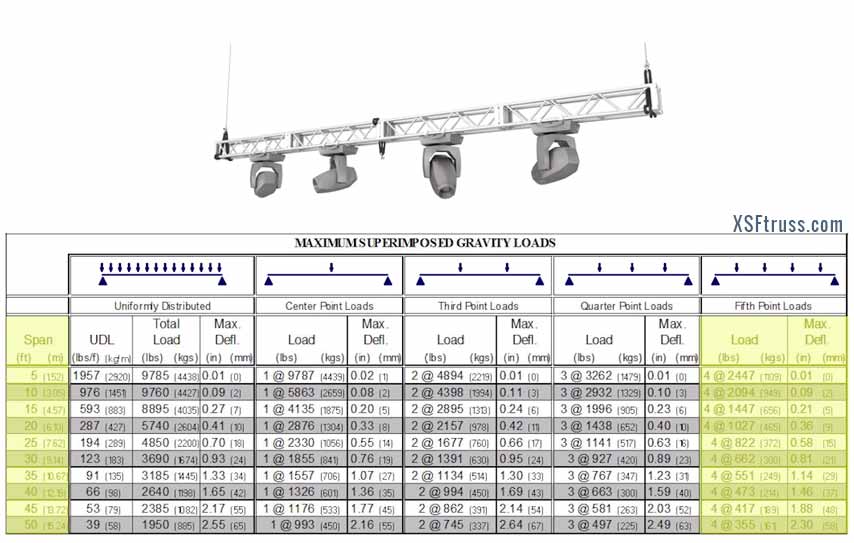
The left-hand vertical columns represent increasing increments of span.
Important Additional Information
The self-weight or dead load of XSF truss is taken into account in engineering calculations and does not have to be included in the calculation of live loads.
Therefore, the user does not need to subtract the weight of the truss from the provided loads.
Calculated Deflections for maximum loadings are shown in the table. However, actual deflections in the field may be higher due to tolerances designed into the truss.
Dynamic Load which would also include shock loads, wind, seismic, snow, and ice loads are not included in XSF load tables.
All point loads shall occur at a panel point on the truss.
Understanding the basic terminology and layout of truss load tables, and knowing how to properly interpret them for each specific real-world application are vital skills to keeping a safe work environment.

